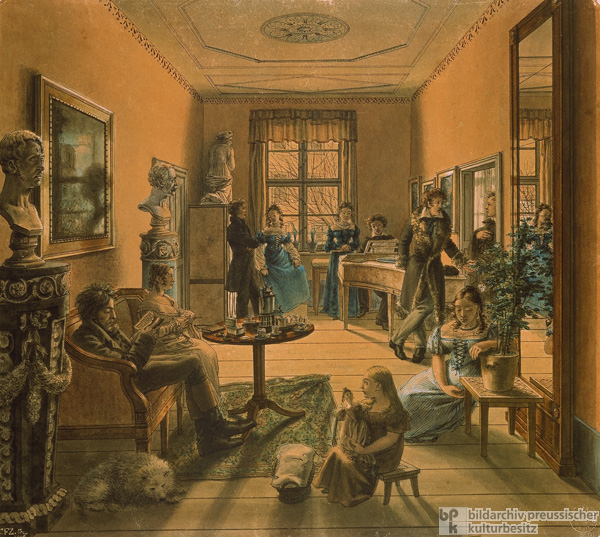













INTRODUCTION | DOCUMENTS | IMAGES | MAPS | EDITOR
|
In early nineteenth-century Germany, the tradition of classical antiquity and humanistic learning had a powerful hold on the collective imagination of the educated bourgeoisie. During the Enlightenment, classical ideals had been propounded by the influential classical scholar Johann Joachim Winckelmann (1717-1768), among others. Later, these same ideals were advanced by Wilhelm von Humboldt (1767-1835), the founder of the modern German university. Humboldt advocated a universal education based upon a thorough knowledge of Greek and Roman antiquity, especially classical literature. In the drawing below, the bourgeois occupants of a Berlin living room pursue several activities associated with “classical” culture: namely, reading, conversing, and playing music. Still, the clearest testimony to classicism’s influence is the art on display in this home. Two classical portrait busts mounted on highly ornamental bases and a reproduction of an antique statue assume prominent roles within an otherwise spare Biedermeier interior. Watercolor and pen-and-ink drawing by Carl Friedrich Zimmermann (1796-1820), 1816.
© Bildarchiv Preußischer Kulturbesitz / Lutz Braun |
 print version
print version return to image list
return to image list previous image
previous image
